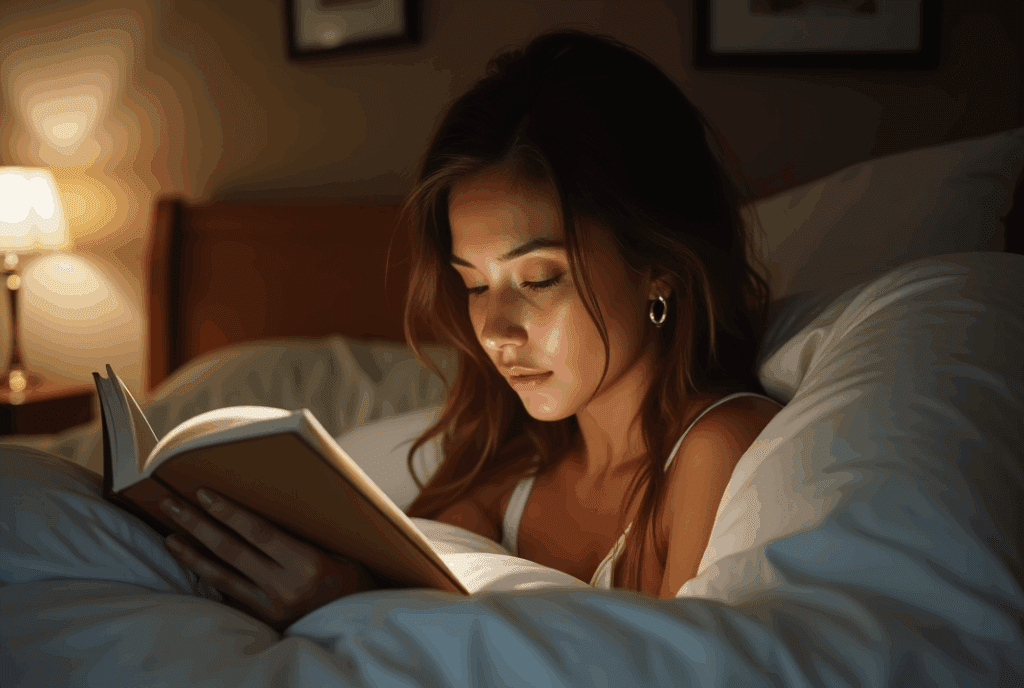As we navigate our busy lives, falling asleep quickly can feel like a daunting challenge. We often underestimate the power of relaxation techniques that can help us transition into rest more smoothly. By incorporating simple methods, we can create a peaceful environment that promotes sleep. But what specific techniques can truly make a difference? Let’s explore some effective strategies that can have us drifting off in just minutes.
Understanding the Connection Between Relaxation and Sleep
When we think about achieving restful sleep, it’s essential to recognize how closely relaxation and sleep are intertwined. Our bodies need to enter relaxation responses to transition smoothly through sleep cycles. When we’re relaxed, we signal our brain to wind down, making it easier to fall asleep and stay asleep.
If we’re tense or anxious, our sleep cycles can become disrupted, leading to restless nights. We might toss and turn, struggle to reach deeper sleep stages, or wake up too early. By practicing relaxation techniques—like deep breathing or gentle stretching—we can promote those crucial relaxation responses that help us prepare for sleep.
Together, we can explore different methods that foster relaxation, allowing us to embrace the restorative powers of sleep. Ultimately, understanding this connection is the first step toward improving our nightly rest and enhancing our overall well-being.
Why Falling Asleep Quickly Isn’t Always About Exhaustion
Relaxation plays a key role in helping us fall asleep, but it’s not the only factor at play. We often think that sheer exhaustion guarantees quick sleep, yet our sleep quality heavily depends on our environment and mindset. If our bedroom is cluttered, too bright, or noisy, it’s tough to drift off, no matter how tired we are.
Creating a calming sleep environment can significantly enhance our ability to fall asleep quickly. Simple adjustments, like dimming the lights, using blackout curtains, or incorporating soothing scents, can make a world of difference.
Moreover, our mental state matters. Stress and anxiety can keep our minds racing, preventing that much-needed relaxation. By prioritizing a peaceful atmosphere and addressing our thoughts, we can improve not just how fast we fall asleep, but also how well we sleep. So, let’s focus on optimizing our sleep environment for better rest and quicker shut-eye.
Breathing Techniques That Calm the Body Within Minutes
Many of us underestimate the power of our breath in calming the body and mind. By practicing techniques like diaphragmatic breathing and progressive relaxation, we can create a serene environment for sleep. Here are some simple methods we can use to harness our breath’s calming effects:
- Diaphragmatic Breathing: Inhale deeply through the nose, letting your abdomen rise, then exhale slowly through the mouth.
- 4-7-8 Breathing: Inhale for 4 seconds, hold for 7, and exhale for 8. Repeat this cycle.
- Box Breathing: Inhale for 4 seconds, hold for 4, exhale for 4, and pause for another 4.
- Progressive Muscle Relaxation: As we breathe, tense and then relax each muscle group from head to toe.
- Mindful Breathing: Focus on the rhythm of our breath, letting go of distractions.
Mental Shifts That Support Faster Sleep
Calming our bodies through breath is just one part of preparing for a good night’s sleep. To enhance our sleep experience, we can engage in mindfulness meditation, which helps us focus on the present moment and quiet racing thoughts. By dedicating just a few minutes to this practice, we can create a mental environment conducive to rest.
Additionally, cognitive reframing can shift our perspective on stressors that keep us awake. Instead of viewing our worries as insurmountable, we can reframe them as challenges we’re equipped to handle. This shift reduces anxiety and opens the door to relaxation.
Let’s consciously choose to let go of the day’s burdens, embracing a mindset of peace and acceptance. As we practice these mental shifts, we’ll find it easier to drift into sleep, allowing our minds to unwind and recharge for the next day.
Physical Stillness as a Tool for Quieting the Mind
Physical stillness serves as a powerful ally in quieting the mind. When we embrace moments of stillness, we cultivate body awareness and enhance our ability to drift into restful sleep. By integrating mindful movement into our routine, we prepare ourselves for these tranquil moments. Here are some ways we can use physical stillness to foster peace:
- Breathe deeply: Focus on each breath to ground ourselves in the present.
- Practice progressive muscle relaxation: Tense and release muscle groups to release tension.
- Engage in gentle stretches: Ease tightness, promoting relaxation before sleep.
- Meditate: Spend a few minutes in silence, noticing thoughts without judgment.
- Visualize calmness: Picture serene environments to soothe our minds.
Incorporating these practices helps us create a serene space for sleep, allowing our minds to quiet and our bodies to relax fully. Let’s embrace stillness together for a more restful night.
Should You Use Quick Relaxation Daily or Occasionally?
How often should we incorporate quick relaxation techniques into our daily routines? We believe it’s beneficial to adopt a daily practice, especially if we find ourselves stressed or struggling to unwind. By making quick relaxation a regular part of our day, we can enhance our overall well-being and create a habit that promotes better sleep.
However, occasional use can also be effective. If we’re facing a particularly hectic week or a challenging day, turning to these techniques when needed can provide immediate relief. The key is finding what works best for us—whether it’s a few minutes of deep breathing or a quick body scan.
Ultimately, integrating quick relaxation into our routines helps us develop resilience against stress. Let’s consider our individual needs and preferences, and decide whether daily practice or occasional use will serve us best in achieving a more restful night’s sleep.




